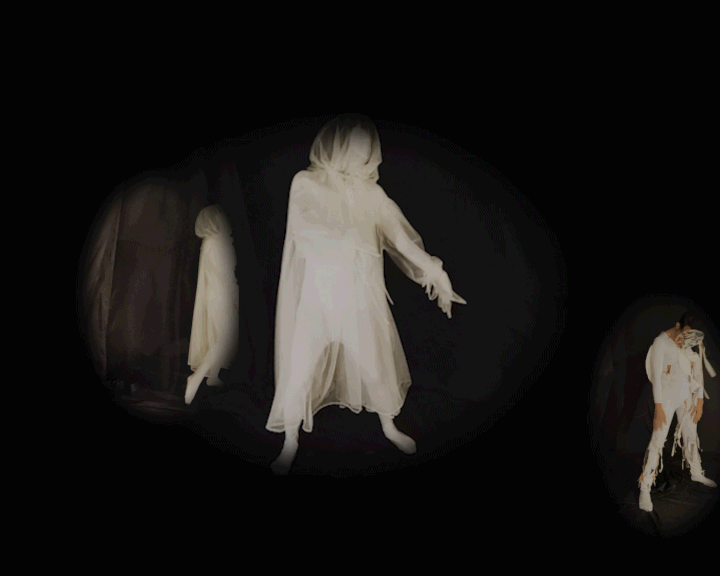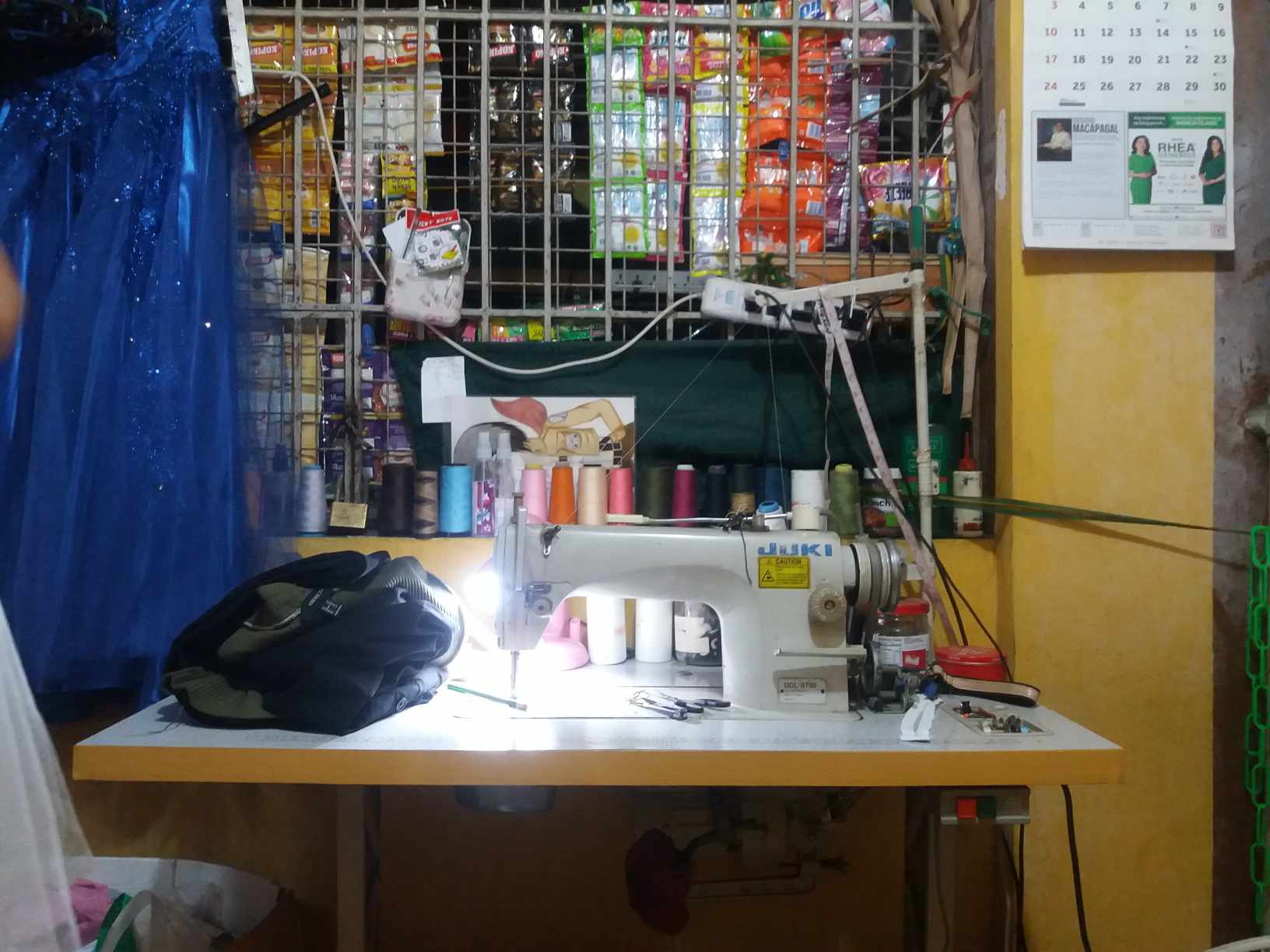Last October 12, multimedia performance Multong Bakla: A Silent Presence of Beauty debuted in the LIVE Biennale show in The Polygon Gallery in Vancouver, Canada. The act involved contributions from Zeus Bascon, Ethan Dailo, Eric Bico, Althea Pagdagdagan, and Gabe Tiano in the Philippines, and Jordan Baylon, Eris Fitz-James, Jose Macasinag, Joshua Ongcol in Canada.
There are plans to hold another iteration this time in the Philippines in early 2024.
I had evening tea (without spilling it) in art and queer mecca Cubao Expo with Laguna-based Bascon, Multong Bakla principal initiator who also designed costumes and choreographed for the performance, which roughly translates to “gay ghost” or “queer specter.”
Multong Bakla is also the title of a 2014 Filipino rock track by The Youth which many interpret as homophobic, and Bascon states that this very song, combined with his queer experience inspired the performance, questioning the roots of stigma, especially towards LGBT+ folk who are openly out.
Bascon was never afraid of ghosts, of the supernatural. “Others might freeze or flee at the thought of encountering a ghost,” the artist smiles. “But honestly, if a ghost chose to manifest to me, I’d be curious, I’d want to know why. Like people, ghosts have stories, a history. Why are you here? Who are you?”
In Multong Bakla, a ghost can mean two things for Bascon: the shell of a life pushed to the side and desperately wanting to communicate with the living and re-experience the world, and a spirit full of potential, that when summoned, may enrich the world it is called into.
The work behind Multong Bakla first began during M:ST 10, a 2021 artist residency program held in Calgary, Canada. Bascon reached out to Jordan Baylon who then became co-project lead. Unfortunately, circumstances prevented a culminating show, but the seeds of Multong Bakla nonetheless took root.

First, Baylon conducted a workshop presented by Bascon inviting LGBT+ Filipinos from the Philippines, Macau, and Canada to process their experiences. With the participants’ consent, Bascon then crafted a poem using words from the responses that resonated the most with the poem’s intended feeling.
This poem then evolved into an original choreography which Bascon developed with fellow queer artists Eric Bico (as his mannequin alter-ego Manikween) and Ethan Dailo (as alter-ego 1haida). The trio performed and filmed it.
For the costumes, Bascon consulted silk research from the Sericulture Research and Development Institute of the Don Mariano Marcos State University in La Union and also sourced handwoven cotton-silk from the JAF Handicraft and Piña Industry in Kalibo, Aklan.
He then executed the designs with people from his Laguna neighborhood, such as regular collaborator Ate Leony Baltazar with additional help from Ate Zaira Seanz, an accountant who learned to sew for her daughter’s needs, for Manikween’s soft tulle costume.
In 2022, Bascon was then tapped by 2023 LIVE Biennale director and curator Derrick Chang. Bascon, Baylon, and Chang all previously met in the 2019 Kamias Triennale in the Philippines. As the world emerged from the pandemic, the ball was rolling again.
Suffice to say, Multong Bakla may have been Bascon’s idea, but it became a community creation, involving many hands from the Philippines and beyond.
The official LIVE Biennale entry describes the performance as a “divine communal summoning of queer Filipina/o/x spirits... a ghostly haunting that includes trans-pacific other-worldly projected performances by artists based in the Philippines combined with live performances by artists based in Canada.”
The poem was also projected, this time written in precolonial Baybayin script. It was all a 21st Century séance of sorts. “It really is a spirit summoning,” Bascon tells me. “I told Jordan, you’re the medium, we in the Philippines are the spirits!”
Ultimately, Multong Bakla is a continuation of previous projects Bascon made on similar themes: being queer in an online world, such as in Sunset Garden, in collaboration with fellow Laguna artist Czar Kristoff and the Ospital ng Biñan HIV Treatment Hub and Cultivating a Garden, the child of MST:10.
Many of the concepts present in Multong Bakla recur in Bascon’s other projects, from shadow work and confronting internalized homophobia in MS:T 10 to tackling the layers of queerness in the La Union, Philippines-based Emerging Islands residency program. Folk mysticism and using shadows have been mainstays since the start of the CCP 13 Artists awardee’s art practice.
Working with Filipinos in Canada and Macau showed Bascon the nuances and variations of the Filipino experience, and he observed that despite sharing ethnic roots, learning how diasporic Filipinos made meaning, communicated, and showed care to each other was like learning a new language. This experience also informed the trans-Pacific iteration of Multong Bakla.
“Despite the language barriers,” Bascon beams. “Our halfway point, our mutuality, was in our queerness.”

IG story excerpt of Mutlong Bakla video documentation featuring an introduction to Gabe Tiano's Naalimpungatan_mix1.m4a.
Presently, Bascon is looking forward to a local iteration of the performance, working with a homeland audience (“more about our Filipino, mainland queer experience”), and possibly building a new choreography.
He, 1haida, and Manikween are aiming for March 2024, held in Sampaguita Projects where the videos for LIVE Biennale 2023 were shot.
Given the collaborative nature of the performance, Bascon looks forward to how the local participants will summon – and manifest – their spirits. He mentions Baylon’s observation that the trans-Pacific show, given how it was produced and the themes communicated, was akin to an “integration of multiple selves in one person.”
Bascon returns to how ghosts really are people: “The ghost, the multo, Multong Bakla, who you really are, I want you to be present in the world, to materialize. There’s power in beauty, it can push people to act. I want you to be yourself, to be the most beautiful person who you think you are. Establish your presence: this is me as a person. Alive.”
For updates, follow Bascon’s official art account @zeusbascon on Instagram.
When Pao isn't writing about art, he's trying to be a cat-whisperer.


